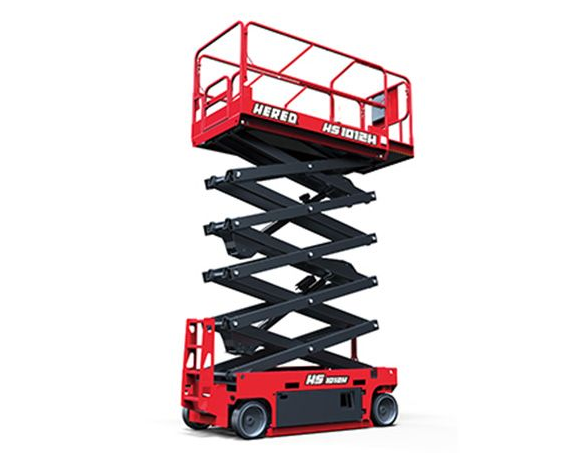How to Safely Operate a Scissor Lift?
Operating a scissor lift safely is crucial to prevent accidents and ensure the well-being of the operator and those around them. Here are guidelines to follow when operating a scissor lift:
1. Training and Certification:
- Before operating a scissor lift, ensure that you have received proper training and certification. Familiarize yourself with the specific model and its controls, as different lifts may have slight variations.
- Understand the safety procedures, emergency protocols, and load capacity limits of the scissor lift.
2. Pre-Operation Inspection:
- Before each use, inspect the scissor lift thoroughly to ensure it is in proper working condition. Check for any damage, loose bolts, leaks, or malfunctioning parts.
- Inspect the guardrails, emergency stop button, and safety harnesses for proper functioning.
- Check the tires for proper inflation and ensure that the brakes are working correctly.
3. Environment Assessment:
- Assess the work area and surroundings for potential hazards. Look for uneven or sloped surfaces, floor obstructions, overhead obstructions, electrical hazards, or areas with limited visibility.
- Identify any potential overhead power lines or other electrical sources that may pose a risk.
- Ensure that the scissor lift is suitable for the specific task and that the ground can support its weight.
4. Personal Protective Equipment (PPE):
- Always wear appropriate personal protective equipment, including a hard hat, safety glasses, high-visibility vest, and non-slip footwear. Depending on the task, additional PPE such as gloves or hearing protection may be required.
- Use a full-body harness and lanyard when working at height. Secure the lanyard to the designated anchor points on the scissor lift platform.
5. Safe Operation:
- Familiarize yourself with the controls, including the lift, lower, and emergency stop buttons. Ensure you understand their functions and location.
- Do not exceed the Hydraulic scissor lift's maximum load capacity. This includes the combined weight of operators, tools, and materials being used.
- Keep the platform clear of any unnecessary items or debris that may pose a tripping hazard or interfere with the controls.
- Ensure that all occupants on the platform remain within the guardrails and do not lean over or extend beyond them.
- Do not operate the scissor lift during adverse weather conditions, such as high winds, thunderstorms, or heavy rain.
- Only move the scissor lift when it is in the lowered position and the platform is clear of any obstructions.
- Ascend or descend slowly and smoothly, avoiding sudden movements that could cause instability or loss of balance.
- Avoid driving the scissor lift on uneven or sloped surfaces unless it is specifically designed for such conditions. If necessary, use outriggers or stabilizers to provide additional support and stability.
- Maintain a safe distance from any edges, drop-offs, or holes in the working area to prevent tipping or falling.
- Be cautious of overhead hazards, such as low ceilings, beams, or power lines. Maintain a safe clearance distance at all times.
- Use caution when working near other machinery, pedestrians, or vehicles. Communicate clearly with others and ensure they are aware of your presence.
- If working near traffic or in public areas, set up appropriate barriers, signage, and warning devices to alert and protect pedestrians and drivers.
6. Emergency Situations:
- In the event of an emergency, such as equipment malfunction, power failure, or an unstable situation, press the emergency stop button immediately.
- If an occupant on the platform becomes injured or requires assistance, safely lower the platform to the ground and provide appropriate first aid or medical attention as needed.
- Contact emergency services or follow your company's established protocols for reporting accidents, injuries, or equipment failures.
Remember, it's crucial to follow the manufacturer's instructions and any specific regulations or guidelines provided by your organization or local authorities. Safety should always be the top priority when operating a scissor lift.





